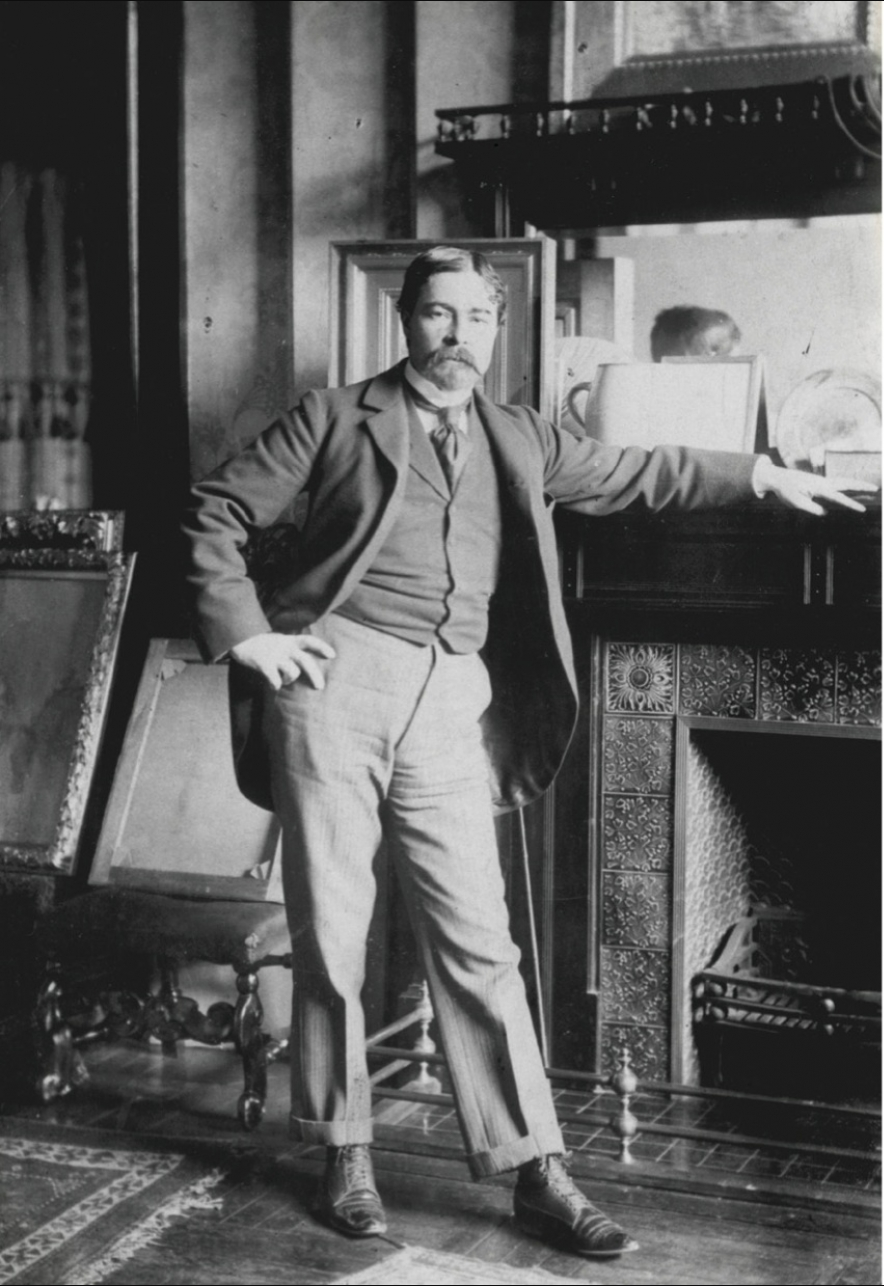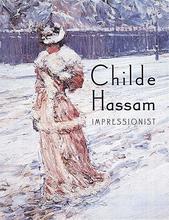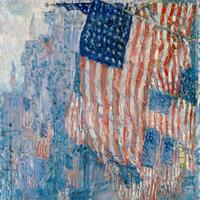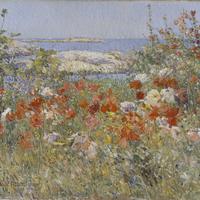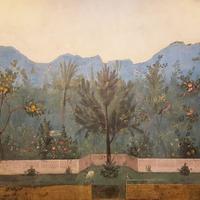More about Childe Hassam
- All
- Info
- Shop
Works by Childe Hassam

Contributor
Childe Hassam was proud of his American roots, and was known to say that he was more American than the rest of them.
He did have some cred as a colonialist; both he and his wife’s families landed in the colonies before 1700, long enough for his ancestor’s name Horsham to become Hassam. He is as American as Hollywood: successful, ruthlessly enterprising, obsessed with glamour, prolific, sexist, and nativist.
He was a blue-collar jock as a kid, a high school dropout that bragged “I could swim across Dorchester Bay and knock out any of the other boys with my fists.” From these modest (lol) roots he embarked on a period of classic American wandering across Europe. During this time he lived in Renoir’s old apartment and recognized the kind of painting he wanted to do in the Frenchman’s discarded canvases. But he would later disavow himself of any influence that wasn’t Dutch or English, keeping his personal creation myth in line with America’s (which is, for the record, not historically accurate).
He was an early adopter of impressionism in America and found success quickly, perhaps as a result of the oil paintings he sent to critics as bribes for good reviews. Hassam was a relentless marketer. He added to speculation of (non-existent) Middle Eastern origins by dropping his first name, Frederick, using Childe instead and by adding a crescent moon to his signature. He was once spotted painting in a field, shirtless (which was illegal until after his death), pounding his naked chest, though it’s not known how effective this particular technique was for selling paintings.
Despite his penchant for dramatics, he never painted drama and his work depicted strict “cheerful elitism.” He made an impressive number of paintings, but only of pretty landscapes, elegant apartments, demure women, fashionable urban streets, and the American flag. He painted so many pictures actually that critics and peers got pretty bored of his work.
Luckily he was surfing “on the crest of a wave” of success, and he sold enough paintings to fund his life of “high thinking and low living.” Such a life included half a haddock for breakfast, a “bucket of fish chowder for dinner,” and a raucous spate of problem drinking.
Later in life his nationalist pride morphed into xenophobia. He began referring to Modernism as “Ellis Island Art,” and he expressed a belief that the American art market was controlled by cunning foreign dealers and “old women.” He was blindly patriotic until death, to the point that when he was arrested on suspicion of being a German spy he congratulated the mistaken soldier on his vigilant service. In the end though even patriotism couldn’t save him from old age, he commuted by ambulance and died like every other overweight, suit wearing, curmudgeon – wealthy and alone.
Sources
- Stewart, Doug. “Impressionism’s American Childe.” Smithsonian Magazine, August 2004. Accessed August 30, 2017. http://www.smithsonianmag.com/arts-culture/impressionisms-american-chil…
- Larkin, Susan G. “Hassam in New England 1889-1918.” Edited by Helene B. Weinberg. Childe Hassam American Impressionist. New Haven: Yale University Press, 2004. Accessed August 30, 2017. https://books.google.com/books?id=g2H3WQddqHcC&printsec=frontcover#v=
- Weinberg, Barbara H. “Introduction.” Edited by Barbara H. Weinberg. Childe Hassam American Impressionist. New Haven: Yale University Press, 2004. Accessed August 30, 2017. https://books.google.com/books?id=g2H3WQddqHcC&printsec=frontcover#v=on…
- Pilson, Dana. “‘On the Crest of a Wave’: Hassam and the Marketing of His Art.” Edited by Barbara H. Weinberg. Childe Hassam American Impressionist. New Haven: Yale University Press, 2004. Accessed August 30, 2017. https://books.google.com/books?id=g2H3WQd
Featured Content
Here is what Wikipedia says about Childe Hassam
Frederick Childe Hassam (/ˈtʃaɪld ˈhæsəm/; October 17, 1859 – August 27, 1935) was an American Impressionist painter, noted for his urban and coastal scenes. Along with Mary Cassatt and John Henry Twachtman, Hassam was instrumental in promulgating Impressionism to American collectors, dealers, and museums. He produced over 3,000 paintings, oils, watercolors, etchings, and lithographs over the course of his career, and was an influential American artist of the early 20th century.
Check out the full Wikipedia article about Childe Hassam

